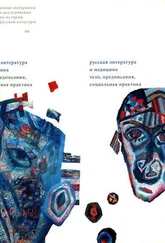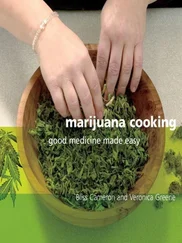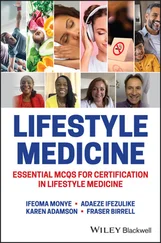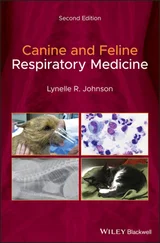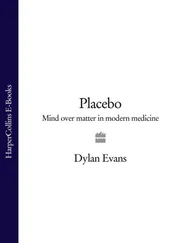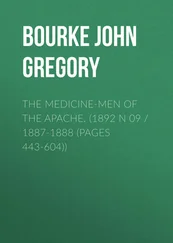1 Cover
2 Title Page Respiratory Medicine Lecture Notes Stephen J. Bourke Consultant Physician Royal Victoria Infirmary Newcastle upon Tyne, UK Graham P. Burns Consultant Physician Royal Victoria Infirmary Newcastle upon Tyne, UK James G. Macfarlane Consultant Physician Royal Victoria Infirmary Newcastle upon Tyne, UK Tenth Edition
Lecture Notes
3 Copyright Page
4 Preface
5 About the Companion Website
6 Part 1: Structure and function 1 Anatomy and physiology of the lungs A brief revision of clinically relevant anatomy Physiology FURTHER READING Multiple choice questions
7 Part 2: History taking, examination and investigations 2 History taking and examinationHistory taking Symptoms History Examination Signs FURTHER READING Multiple choice questions Multiple choice answers 3 Pulmonary function tests Normal values Simple tests of ventilatory function Gas transfer (transfer factor for carbon monoxide) Arterial blood gases FURTHER READING Multiple choice questions Multiple choice answers 4 Radiology of the chestChest X‐ray Abnormal features Ultrasonography of the chest Computed tomography Positron emission tomography FURTHER READING Multiple choice questions Multiple choice answers
8 Part 3: Respiratory diseases 5 Upper respiratory tract infections and influenza Common cold Pharyngitis Sinusitis Acute laryngitis Croup Pertussis Acute epiglottitis Influenza FURTHER READING Multiple choice questions Multiple choice answers 6 PneumoniaLower respiratory tract infections Pneumonia Specific pathogens Coronavirus disease 2019 (COVID‐19) Immunocompromised patients Pulmonary complications of HIV infection FURTHER READING Multiple choice questions Multiple choice answers 7 Tuberculosis Epidemiology Clinical course Diagnosis Treatment Latent tuberculosis Tuberculin testing Control Non‐tuberculous mycobacterial pulmonary disease FURTHER READING Multiple choice questions Multiple choice answers 8 Bronchiectasis and lung abscessBronchiectasis Lung abscess Necrobacillosis Bronchopulmonary sequestration FURTHER READING Multiple choice questions Multiple choice answers 9 Cystic fibrosisIntroduction The basic defect Clinical features Diagnosis Treatment Prospective treatments FURTHER READING Multiple choice questions Multiple choice answers 10 AsthmaDefinition Prevalence Aetiology Pathogenesis and pathology Clinical features Diagnosis Investigations Conditions associated with asthma Management Acute severe asthma FURTHER READING Multiple choice questions Multiple choice answers 11 Chronic obstructive pulmonary diseaseIntroduction Definitions Aetiology Clinical features and progression Investigations Management Emergency treatment Admission avoidance and early supported discharge for COPD FURTHER READING Multiple choice questions Multiple choice answers 12 Carcinoma of the lungIntroduction Aetiology Pathology Diagnosis Communicating the diagnosis Lung cancer screening Treatment Carcinoid tumour FURTHER READING Multiple choice questions Multiple choice answers 13 Interstitial lung diseaseIntroduction Idiopathic pulmonary fibrosis Idiopathic interstitial pneumonias Connective tissue diseases Drug‐induced interstitial lung disease Hypersensitivity pneumonitis Sarcoidosis FURTHER READING Multiple choice questions Multiple choice answers 14 Occupational lung diseaseIntroduction Work‐related asthma Berylliosis Flavouring‐related obliterative bronchiolitis: “popcorn worker’s lung” Pneumoconiosis Silicosis Siderosis Asbestos‐related lung disease Compensation FURTHER READING Multiple choice questions Multiple choice answers 15 Pulmonary vascular diseasePulmonary embolism Pulmonary hypertension Pulmonary vasculitis FURTHER READING Multiple choice questions Multiple choice answers 16 Pneumothorax and pleural effusionPneumothorax Pleural effusion Oesophageal rupture FURTHER READING Multiple choice questions Multiple choice answers 17 Acute respiratory distress syndromeIntroduction Pathogenesis Clinical features Recognition of critically ill patients Treatment Prognosis FURTHER READING Multiple choice questions Multiple choice answers 18 Ventilatory failure and sleep‐related breathing disordersIntroduction Sleep physiology Ventilatory failure Ventilatory failure and sleep Obstructive sleep apnoea syndrome (Fig. 18.3) Central sleep apnoea FURTHER READING Multiple choice questions Multiple choice answers 19 Lung transplantationIntroduction Types of operation Indications for transplantation Post‐transplantation complications and treatment Prognosis Future prospects FURTHER READING Multiple choice questions Multiple choice answers
9 Index
10 End User License Agreement
1 Chapter 2 Table 2.1 Main respiratory symptoms Table 2.2 Major causes of haemoptysis Table 2.3 Causes of clubbing
2 Chapter 3 Table 3.1 Normal values for arterial blood gases whilst breathing normal ro...
3 Chapter 4 Table 4.1 Causes of pulmonary masses
4 Chapter 5 Table 5.1 Principal respiratory viruses
5 Chapter 6Table 6.1 Differential diagnosis of pulmonary infiltrates in immunocompromi...Table 6.2 Pulmonary complications of HIV infection
6 Chapter 7Table 7.1 Treatment of tuberculosis
7 Chapter 8Table 8.1 Aetiology of bronchiectasis
8 Chapter 10Table 10.1 Diagnosing asthma. 'All that wheezes is not asthma and not all a...
9 Chapter 12Table 12.1 Aetiology of carcinoma of the lungTable 12.2 Outline of examples of TNM staging of non‐small cell lung cancer...Table 12.3 World Health Organization performance status scale. Patients wit...
10 Chapter 13Table 13.1 Clinical features of airway disease and interstitial lung diseas...
11 Chapter 14Table 14.1 Common causes of occupational asthma
12 Chapter 17Table 17.1 Initiating injuries and illnesses in ARDSTable 17.2 Features indicating a critically ill patient. Early warning scor...
13 Chapter 18Table 18.1 The Epworth Sleepiness Scale is useful in screening patients for...
1 Chapter 1 Figure 1.1 Diagram of bronchopulmonary segments. LING, lingula; LL, lower lo... Figure 1.2 Surface anatomy. (a) Anterior view of the lungs. (b) Lateral view... Figure 1.3 Structure of the alveolar wall as revealed by electron microscopy... Figure 1.4 Effect of diaphragmatic contraction. Diagram of the ribcage, abdo... Figure 1.5 Graph of (static) lung volume against oesophageal pressure (a sur... Figure 1.6 Diagrammatic representation of the increase in total cross‐sectio... Figure 1.7 Model of the lung, demonstrating the flow‐limiting mechanism (see... Figure 1.8 Oxygen–carbon dioxide diagram. The continuous and interrupted lin... Figure 1.9 Blood oxygen and carbon dioxide dissociation curves drawn to the ... Figure 1.10 Distribution of V/Q relationships within the lungs. Although the... Figure 1.11 Effect of V/Q imbalance. (a) Appropriate V/Q. The V/Q ratio is s...
2 Chapter 2 Figure 2.1 Which man has airway obstruction? Figure 2.2 Clubbing. (a) Normal: the ‘angle’ is shown. (b) Early: the angle ... Figure 2.3 Movement of the costal margin. The arrows indicate the direction ... Figure 2.4 Summary of sound transmission in the lung. Sound is generated eit... Figure 2.5 Signs of localised lung disease.
3 Chapter 3 Figure 3.1 Total lung capacity and its subdivisions. Figure 3.2 Forced expiratory spirogram tracing obtained with a spirometer. (... Figure 3.3 Measurement of PEF. The subject takes a full inspiration, applies... Figure 3.4 Flow/volume loop. Airflow is represented on the vertical axis and... Figure 3.5 Large (central) airway obstruction. Typical tracing obtained with... Figure 3.6 Further flow/volume loops. The dotted outline represents a typica... Figure 3.7 Relative effects on expiratory and inspiratory flow of intra‐ and... Figure 3.8 Measurement of transfer factor by the single‐breath method. Schem... Figure 3.9 Bicarbonate isopleths (diagonal lines; the bicarbonate level is c... Figure 3.10 Acid/base disturbances. The oval indicates the normal position, ...
Читать дальше

